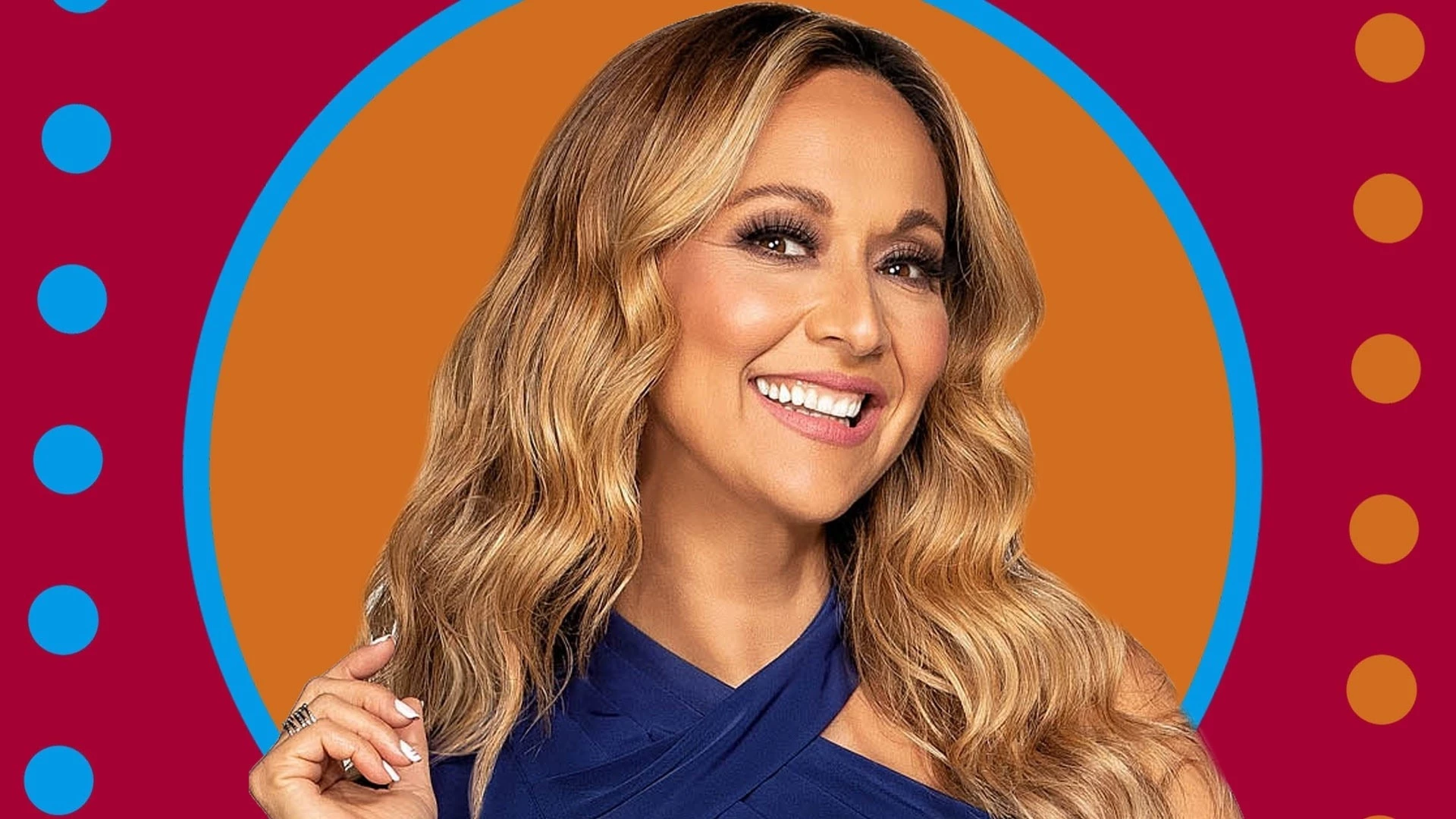Cuantos Anos Tiene Veronica Bastos - Unraveling The Question
It's a pretty common thing, you know, to be curious about people who are in the public eye. Folks often wonder about their lives, what they do, and yes, even how old they might be. One phrase that pops up quite a bit when people are trying to figure out someone's age in Spanish, like with a well-known personality such as Veronica Bastos, is "cuantos anos tiene Veronica Bastos." It’s a straightforward question, yet it holds a little bit of a linguistic lesson within it, too.
When you put that question out there, you're not just asking for a number; you're also using a key piece of the Spanish language. That little word, "cuantos," is more than just a simple query. It helps us get to the heart of how we ask about amounts, whether it's years, things, or even feelings, in a way that feels natural to native speakers. It's actually a pretty versatile little word, so it's almost always worth taking a closer look at how it works.
So, we're going to pull back the curtain a little on this phrase, not so much to guess at an answer about Veronica Bastos herself, but rather to really get a feel for that important word, "cuantos," and what it means when we ask about "how many" of something. It's about understanding the nuts and bolts of asking about quantity in Spanish, which, as a matter of fact, is something you’ll use all the time.
Table of Contents
- Understanding "Cuantos" - A Look at Quantity
- What Exactly Does "Cuantos" Mean in "cuantos anos tiene veronica bastos"?
- The Many Shapes of "Cuantos" - Gender and Number
- How Do We Use "Cuantos" When Asking About Age, Like in "cuantos anos tiene veronica bastos"?
- Beyond Just Counting - Other Ways "Cuantos" Shows Up
- Why Is Knowing "Cuantos" Important for a Phrase Like "cuantos anos tiene veronica bastos"?
- Putting It All Together - Forming Questions with "Cuantos"
- What Are Some Common Mistakes When Using "Cuantos" for "cuantos anos tiene veronica bastos"?
Understanding "Cuantos" - A Look at Quantity
When you hear "cuantos," your mind should, in some respects, immediately go to the idea of asking about a number or an amount. It’s the Spanish equivalent of saying "how many" or "how much." Think about it: if you want to know the number of anything, whether it’s people, objects, or even years, "cuantos" is often the word you reach for. It’s a very direct way to get information about quantity, and it's pretty versatile, you know.
This word is a key player in questions where you’re trying to count things. For instance, if you’re wondering about the number of guests who showed up to a get-together, you might say, "Solo unos cuantos chicos vinieron a la fiesta," which just means "Only a few boys showed up to the party." See how "cuantos" helps specify a small, uncounted amount? It’s not about a precise number here, but about indicating a quantity, which is really its main job.
It's interesting, because "cuantos" doesn't always mean a large number; it can refer to just "a few," as in that example. This flexibility is part of what makes it such a useful part of everyday talk. It helps us talk about amounts in a pretty natural way, whether we're talking about something specific or just a general idea of quantity. So, when you hear "cuantos anos tiene veronica bastos," you're really asking about a count of years.
- Chennedy Carter Twitter
- Plan B Twitter
- Fidan Atalay If%C3%A5%C3%BFa
- Buffpup Face Reveal
- Special Kherson Cat Twitter
What Exactly Does "Cuantos" Mean in "cuantos anos tiene veronica bastos"?
Let's break down that specific phrase a little. When someone asks "cuantos anos tiene Veronica Bastos," they are, basically, trying to find out the number of years she has lived. Here, "cuantos" is specifically asking "how many" years. It’s a direct inquiry about a count. It’s not asking about the quality of her years or anything else; it’s purely about the numerical value of her age, which is, you know, a pretty common thing to wonder about public figures.
This word, "cuantos," serves as an interrogative, meaning it’s a question word. It’s right there at the start of the question, setting the stage for an answer that will be a number. It’s like saying, "Give me a count of the years." And, in fact, it is specifically used to ask about how many or how much of something there is. This makes it a pretty straightforward tool for getting numerical information, which is, like, super helpful in conversation.
Think of it as a little pointer, indicating that the response should be a quantity. If you were to ask "cuantos libros tienes?" you'd expect a number of books in return. Similarly, with "cuantos anos tiene veronica bastos," the expectation is a number representing her age. It’s a simple concept, but it's really important for getting your questions understood clearly.
The Many Shapes of "Cuantos" - Gender and Number
One of the cool things about "cuantos" is that it’s not a one-size-fits-all kind of word. It actually changes its shape depending on what it's talking about, which is something Spanish does a lot. You’ll find it as "cuanto," "cuanta," "cuantos," and "cuantas." These different forms exist because Spanish words often have to match up with the gender and the number of the thing they’re describing, which is, you know, a bit different from English.
So, when you're talking about something that's thought of as male and there's only one of it, you'd use "cuanto." If it's a female thing and there's only one, it becomes "cuanta." But then, if you're talking about multiple male things, you get "cuantos," just like in "cuantos anos tiene veronica bastos," because "años" (years) is a male word and there are many of them. And for multiple female things, it’s "cuantas." It’s a pretty neat system, actually, once you get the hang of it.
For example, "el hombre guapo" (the handsome man) uses "el" and "guapo" because "hombre" (man) is a male word. Similarly, "el sol" (the sun) is also male. So, when we use "cuantos," it's because "años" (years) is a male word in Spanish, and we're talking about more than one year. This matching up of words is a basic rule in Spanish, and it applies to our question about how old someone is, which, you know, makes a lot of sense.
How Do We Use "Cuantos" When Asking About Age, Like in "cuantos anos tiene veronica bastos"?
When you want to know someone's age in Spanish, you’re basically asking "how many years does that person have?" That's where "cuantos" comes into play. The phrase "cuantos años tiene" literally translates to "how many years does he/she have." It's a very common and polite way to ask, and it’s probably the most direct way to get that piece of information, you know.
The "años" part is plural, meaning "years," and it’s a male word, which is why we use "cuantos" (the male, plural form) instead of "cuantas" or "cuanto." If you were asking about something female and plural, like "cuantas manzanas" (how many apples), you'd use "cuantas." But for years, it’s always "cuantos," which is, like, a pretty consistent rule.
So, when you hear or say "cuantos anos tiene veronica bastos," you’re using the correct form of the question word to match "años." It’s a perfect example of how the grammar of "cuantos" works in a real-life situation. It’s actually a pretty simple pattern once you see it in action, and it helps you form questions about quantity for all sorts of things, which is, you know, pretty useful.
Beyond Just Counting - Other Ways "Cuantos" Shows Up
While "cuantos" is great for asking "how many," it also shows up in other interesting ways in Spanish. It can be part of phrases that talk about cause and effect, or how one thing influences another. This is where it goes a little beyond just a simple count and starts to connect ideas, which is, like, pretty cool.
Consider the phrase "Cuantos más puntos reúna un gobierno en materia de gobernanza, más recibirá." This translates to something like, "The more points a government gathers in terms of governance, the more it will receive." Here, "cuantos más" isn't asking a question; it's expressing a relationship, a sort of "the more... the more..." idea. It’s showing a direct link between an increasing amount of one thing and an increasing amount of another, which is, you know, a pretty common way to talk about things.
Another example is "Cuanto más pidas, menos te serviré," which means "The more you ask for, the less I will serve you." Again, "cuanto más" sets up this proportional relationship. These uses show that "cuantos" and its variations are not just for direct questions but also for making statements about how quantities relate to each other. It really adds a layer of depth to the word, and it’s, actually, a very common construction in Spanish.
Why Is Knowing "Cuantos" Important for a Phrase Like "cuantos anos tiene veronica bastos"?
Knowing how "cuantos" works is pretty important for a few reasons, especially if you’re trying to speak or understand Spanish. First off, it’s a fundamental part of asking questions about quantity. If you can’t use "cuantos" correctly, you might struggle to ask simple things like "how many books?" or "how much water?", which is, you know, a pretty basic need.
Secondly, getting the gender and number right with "cuantos" (cuanto, cuanta, cuantos, cuantas) shows that you have a good grasp of Spanish grammar. It helps you sound more natural and makes your questions clearer. If you were to say "cuanta anos" instead of "cuantos anos," it would sound a bit off to a native speaker, even though they might still understand what you mean. So, it’s about accuracy and sounding like you know what you’re talking about, which is, like, pretty important for good communication.
Finally, understanding "cuantos" helps you pick up on those more complex sentence structures we talked about, like "the more... the more..." Knowing these nuances really opens up your ability to understand and express more intricate ideas in Spanish. So, when you think about "cuantos anos tiene veronica bastos," it's not just about her age, but about a building block of the language itself, which is, you know, pretty cool.
Putting It All Together - Forming Questions with "Cuantos"
So, now that we’ve pulled apart "cuantos" a bit, let’s think about how we put it all back together to form complete questions. The basic pattern is pretty simple: "cuantos" (or its variations) followed by the thing you’re counting, and then often a verb. This structure is very consistent, and it’s, actually, something you’ll see again and again.
For example, if you want to know how many students are in a class, you'd ask, "Cuantos estudiantes hay?" ("How many students are there?"). Or, to ask about the number of chairs, it would be "Cuantas sillas hay?" Notice how "estudiantes" (students) is male and plural, so it gets "cuantos," while "sillas" (chairs) is female and plural, so it gets "cuantas." This matching is key, and it’s, like, a pretty fundamental part of forming correct questions.
When it comes to asking about age, as in "cuantos anos tiene veronica bastos," the structure is the same. "Cuantos" for the plural, male "años," followed by the verb "tiene" (has), and then the person. This pattern is reliable and helps you ask about quantities of all sorts of things with confidence. It’s a really useful skill to have, and it’s, you know, pretty easy to pick up once you see the pattern.
What Are Some Common Mistakes When Using "Cuantos" for "cuantos anos tiene veronica bastos"?
Even though "cuantos" seems pretty straightforward, people sometimes make a few common slip-ups. One of the biggest is not matching the gender and number correctly. For instance, someone might accidentally say "cuanta años" instead of "cuantos años" when asking about age, because they forgot that "años" is a male word, which is, you know, a pretty common mix-up for new learners.
Another mistake can be forgetting the accent mark over the "a" in "cuántos" when it's a question word. While it might not change the meaning much in casual conversation, it's grammatically correct to include it for interrogatives. It's a small detail, but it shows a bit more polish in your Spanish, and it’s, actually, something that native speakers pay attention to.
Sometimes, people also get confused between "cuantos" (how many) and "que" (what) or "cuando" (when). Each of these question words has its own job, and mixing them up can lead to a muddled question. So, remembering that "cuantos" is specifically for quantity, like in "cuantos anos tiene veronica bastos," helps keep your questions clear and on point, which is, like, pretty important for getting the right answer.
So, we've taken a look at the word "cuantos" and its various forms – "cuanto," "cuanta," "cuantos," and "cuantas" – exploring how they are used to ask about quantity, whether it's "how much" or "how many." We saw how these interrogative words change to match the gender and number of the noun they refer to, as clearly shown in the phrase "cuantos anos tiene veronica bastos," where "cuantos" aligns with the plural, masculine "años." Beyond just simple counting, we also touched on how "cuantos" can express proportional relationships, like "the more... the more..." in Spanish. Understanding these uses helps us form clear questions and grasp the nuances of the language, which is, you know, pretty essential for anyone learning Spanish.
- Liz Harrington Twitter
- %C3%A5%C3%A6%C3%A5 %C3%A9%C3%A4%C2%BA%C2%BA
- Kinzieboo Leak
- Fidan Atalay If%C3%A5%C3%BFa
- Haitian Porn Twitter

All About Verónica Bastos - Age, Net Worth & More

All About Verónica Bastos - Age, Net Worth & More

Discovering Veronica Bastos: A Deep Dive